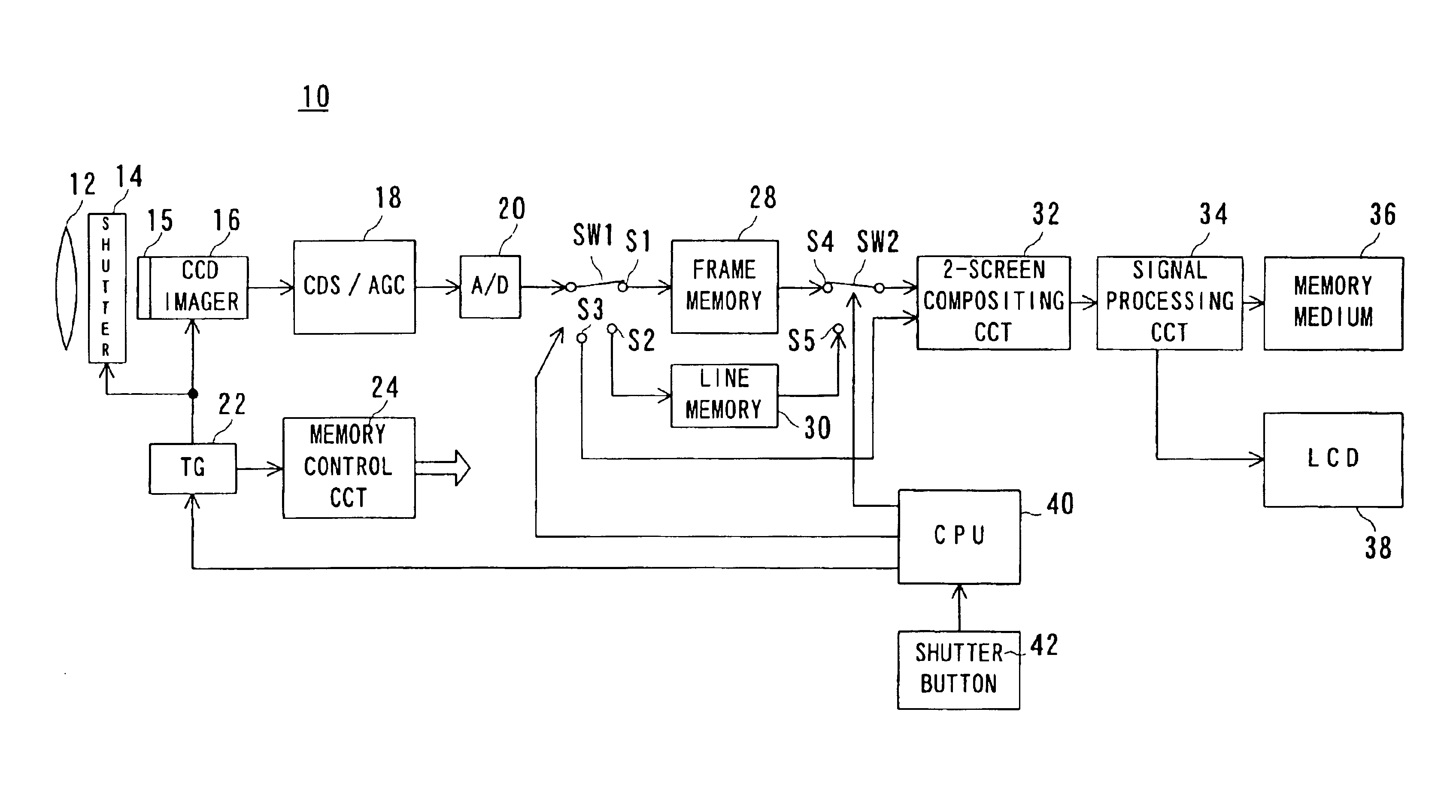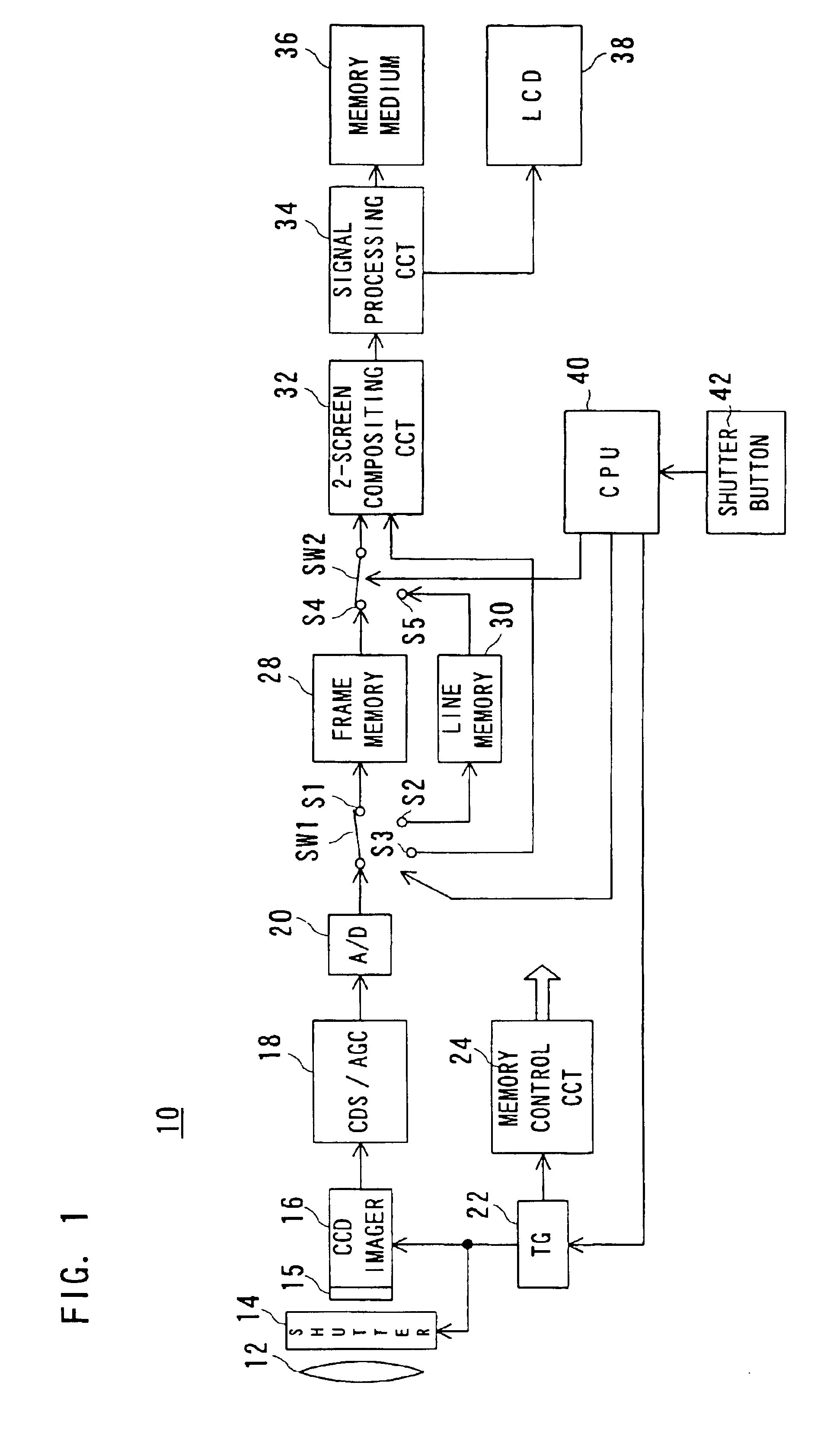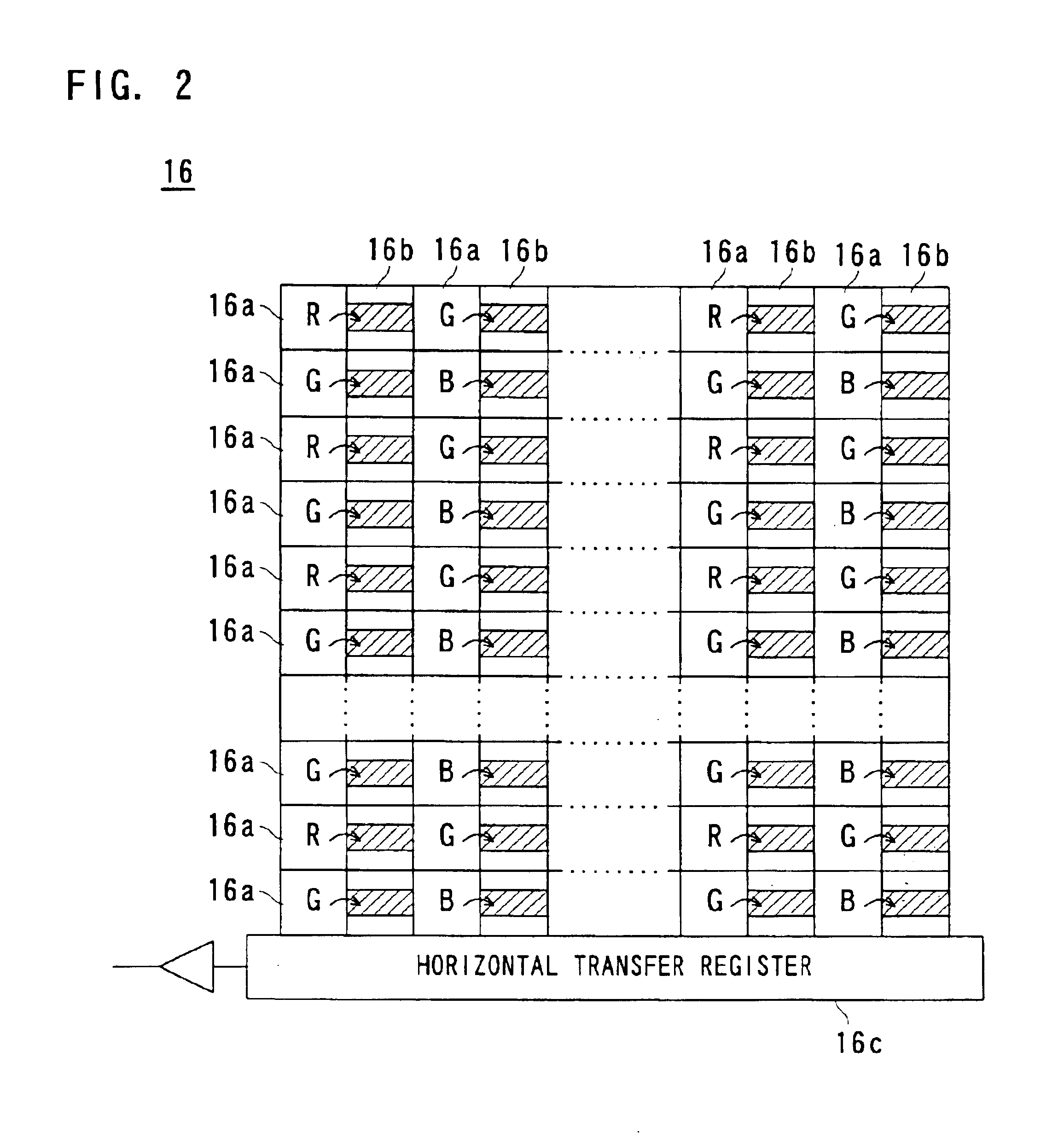Digital camera which produces a single image based on two exposures
a digital camera and exposure technology, applied in the field of digital cameras, can solve the problems of limit in the dynamic range of a shot subject image, limit in the charge amount to be stored on the light receiving elements, etc., and achieve the effect of broadening the dynamic rang
- Summary
- Abstract
- Description
- Claims
- Application Information
AI Technical Summary
Benefits of technology
Problems solved by technology
Method used
Image
Examples
Embodiment Construction
[0041]Referring to FIG. 1, a digital camera 10 of this embodiment includes an optical lens 12 and a shutter member 14 that mechanically operates to block off incoming light. A subject image is given through the optical lens 12 and shutter member 14 to a CCD imager 16 of an interline transfer scheme. The CCD imager 16, with a resolution of XGA, includes pixels arranged in the number of “horizontally 1280” and vertically “960”.
[0042]The CCD imager 16 is formed with a plurality of light receiving elements 16a, as shown in FIG. 2. The light receiving elements 16a have, in front, a primary color filter 15 having filter elements of R, G and B arranged in a mosaic form. The light receiving elements 16a constitute pixels for the CCD imager 16, wherein each light receiving element 16a corresponds to any of the filter elements. The subject image is passed through the primary color filter 15 formed as above to the light receiving elements 16a for photoelectric conversion.
[0043]The charge thus ...
PUM
 Login to View More
Login to View More Abstract
Description
Claims
Application Information
 Login to View More
Login to View More - R&D
- Intellectual Property
- Life Sciences
- Materials
- Tech Scout
- Unparalleled Data Quality
- Higher Quality Content
- 60% Fewer Hallucinations
Browse by: Latest US Patents, China's latest patents, Technical Efficacy Thesaurus, Application Domain, Technology Topic, Popular Technical Reports.
© 2025 PatSnap. All rights reserved.Legal|Privacy policy|Modern Slavery Act Transparency Statement|Sitemap|About US| Contact US: help@patsnap.com



